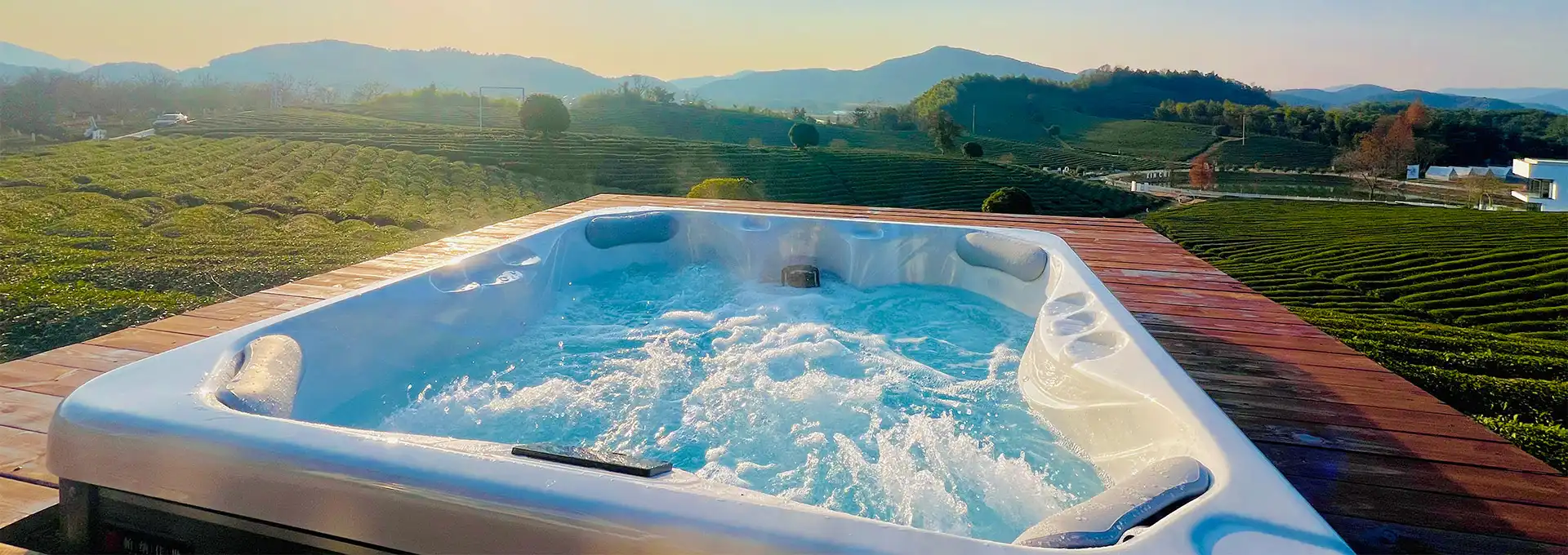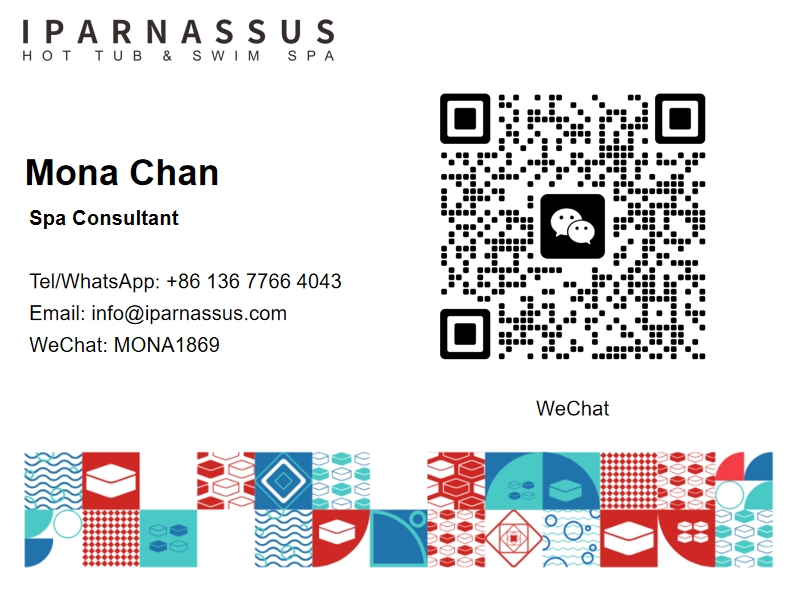Can bad orings in hot tub pump cause flow issues?
2025-07-16 17:29:45
When enjoying a relaxing soak in your hot tub, proper water flow is essential for both the therapeutic benefits and overall functionality of your system. O-rings, those small rubber seals within your pump, play a crucial role in maintaining optimal water circulation. Bad o-rings can indeed cause significant flow issues in your hot tub, leading to reduced jet pressure, inconsistent water circulation, and potential pump damage. Understanding how these vital components affect your spa's performance will help you identify problems early and maintain your hot tub's optimal operation for years of enjoyment.
How do bad o-rings affect hot tub performance?
Impact on Water Circulation Systems
Bad o-rings in your hot tub pump can severely compromise water circulation throughout your entire system. When o-rings deteriorate, crack, or become misaligned, they allow air to enter the pump housing, creating air locks that prevent proper water movement. This air infiltration disrupts the pump's ability to maintain consistent pressure, resulting in reduced water flow to jets and inadequate filtration cycles. The pump must work harder to compensate for these leaks, leading to increased energy consumption and potential motor burnout. Additionally, compromised o-rings can cause water to leak out of the system, reducing overall water pressure and forcing the pump to run longer cycles to maintain proper circulation. Your hot tub's heating system also depends on consistent water flow, so damaged o-rings can affect temperature regulation and overall system efficiency.
Signs of O-Ring Deterioration
Identifying failing o-rings early can prevent major flow problems in your hot tub system. Common indicators include visible water leaks around pump connections, unusual pump noises such as gurgling or grinding sounds, and inconsistent jet pressure during operation. You might notice air bubbles emerging from jets when the pump starts, indicating air infiltration through damaged seals. Temperature fluctuations can also signal o-ring problems, as inconsistent water flow affects heating efficiency. The pump may cycle on and off more frequently than normal, struggling to maintain proper pressure due to compromised seals. Additionally, you might observe decreased water levels requiring more frequent refilling, suggesting water loss through failing o-rings. Early detection of these symptoms allows for timely replacement before more serious damage occurs to your hot tub's circulation system.
Preventive Maintenance for O-Ring Health
Regular maintenance of your hot tub's o-rings significantly extends their lifespan and prevents flow issues. Inspect pump connections monthly for signs of wear, cracking, or misalignment, paying special attention to areas where water or air might escape. Clean o-rings gently with mild soap and water, avoiding harsh chemicals that can cause rubber degradation. Apply appropriate lubricant designed for spa equipment to maintain flexibility and prevent premature aging. Monitor water chemistry carefully, as imbalanced pH levels can accelerate o-ring deterioration and compromise seal integrity. Schedule annual professional inspections to identify potential problems before they affect your hot tub's performance. Keep spare o-rings on hand for quick replacement when needed, ensuring your system maintains optimal flow characteristics. Proper winterization procedures also protect o-rings from freeze damage that can cause immediate seal failure when your hot tub is reactivated.
Why are my hot tub jets weak or not working?
Common Causes of Reduced Jet Pressure
Weak hot tub jets often result from multiple factors working together to restrict water flow throughout your system. Clogged filters represent the most common cause, as dirty or blocked filtration elements prevent adequate water circulation to jets. Air locks in the plumbing system, particularly after draining and refilling your hot tub, can significantly reduce jet pressure by preventing proper water movement. Calcium buildup and mineral deposits accumulate over time, narrowing jet openings and restricting water flow. Closed or partially closed diverter valves can redirect water away from specific jet groups, creating uneven pressure distribution. Additionally, debris such as leaves, oils, or personal care products can accumulate in jet nozzles, physically blocking water flow. Water level that's too low can introduce air into the system, while pump problems including worn impellers or motor issues can reduce overall circulation pressure throughout your hot tub.
Troubleshooting Jet Performance Issues
Systematic troubleshooting helps identify and resolve hot tub jet problems efficiently. Begin by checking water level, ensuring it covers all jets and skimmer intakes to prevent air infiltration. Inspect and clean filters thoroughly, replacing them if they're excessively dirty or damaged beyond cleaning. Test all diverter valves and air controls, ensuring they're properly positioned for optimal water flow to affected jet areas. Remove and clean individual jet nozzles, soaking them in vinegar solution to dissolve mineral deposits and debris. Check for air locks by opening all jets fully and running the pump to purge trapped air from the system. Verify that the pump is functioning correctly, listening for unusual noises that might indicate mechanical problems. Test water chemistry and balance as needed, since poor water quality can contribute to scale buildup and reduced jet performance. If problems persist after these steps, consider professional inspection to identify deeper system issues affecting your hot tub's jet operation.
Professional Repair vs. DIY Solutions
Determining whether to attempt DIY repairs or seek professional help depends on the complexity of your hot tub's jet problems. Simple issues like closed valves, dirty filters, or minor air locks can typically be resolved with basic maintenance skills and standard tools. Cleaning jet nozzles and replacing filters falls within most homeowners' capabilities, requiring minimal technical knowledge. However, pump repairs, electrical issues, or complex plumbing problems require professional expertise to avoid damage or safety hazards. Signs that indicate the need for professional service include persistent low pressure after basic troubleshooting, unusual pump noises, electrical problems, or water leaks around equipment. Professional technicians have specialized tools and knowledge to diagnose complex issues, access hard-to-reach components, and ensure repairs meet safety standards. They can also identify underlying problems that might not be obvious to untrained eyes, preventing future costly repairs. When in doubt, consulting a qualified hot tub service professional protects your investment and ensures safe, effective repairs to restore your hot tub's optimal jet performance.
What causes hot tub circulation problems?
Pump-Related Circulation Issues
The circulation pump serves as the heart of your hot tub's water movement system, and various pump problems can significantly impact overall circulation. Worn or damaged pump seals allow air to enter the system, creating air locks that prevent proper water movement and reduce pressure throughout your hot tub. Clogged pump impellers, often caused by debris or mineral buildup, restrict water flow and force the motor to work harder while delivering less circulation. Motor problems, including overheating, bearing wear, or electrical issues, can cause intermittent or complete circulation failure. Loose pump connections or damaged union fittings create air leaks that compromise the pump's ability to maintain consistent pressure and flow. Additionally, pump age and wear naturally reduce efficiency over time, gradually decreasing circulation capacity until replacement becomes necessary. Regular pump maintenance, including seal inspection and impeller cleaning, helps prevent these circulation problems and extends your hot tub's operational lifespan.
Filtration System Impact on Flow
Your hot tub's filtration system directly affects circulation quality and overall water movement throughout the system. Dirty or clogged filters represent the primary cause of circulation problems, as blocked filtration elements restrict water flow and force the pump to work harder. Improperly sized filters can create flow restrictions, while damaged filter cartridges allow debris to pass through and potentially clog other system components. Filter housing problems, including cracked housings or loose connections, can introduce air into the circulation system and reduce overall flow efficiency. Multiple filter configurations require proper maintenance of all elements to ensure optimal circulation, as one dirty filter can affect the entire system's performance. Additionally, filter placement and orientation affect flow patterns, with incorrectly installed filters creating turbulence and reduced circulation efficiency. Regular filter maintenance, including weekly cleaning and periodic replacement, maintains optimal circulation and protects your hot tub's pump and heating systems from damage caused by restricted flow.
Water Chemistry and Circulation Health
Proper water chemistry plays a crucial role in maintaining healthy circulation throughout your hot tub system. Unbalanced pH levels can cause scale buildup in pipes and equipment, gradually restricting water flow and reducing circulation efficiency. High calcium hardness leads to mineral deposits that accumulate in narrow passages, jets, and pump components, creating flow restrictions over time. Low sanitizer levels allow biofilm and algae growth, which can clog filters and reduce circulation capacity. Conversely, excessive chemical levels can damage system components, including o-rings and seals, leading to air leaks and circulation problems. Total dissolved solids (TDS) buildup requires periodic water changes to maintain optimal flow characteristics and prevent system damage. Regular water testing and proper chemical balance prevent many circulation-related problems while protecting your hot tub's equipment investment. Maintaining appropriate water chemistry also extends the life of pumps, filters, and other circulation components, ensuring consistent performance and reducing long-term maintenance costs.
Conclusion
Bad o-rings in your hot tub pump can indeed cause significant flow issues, affecting everything from jet pressure to overall system performance. Regular maintenance, proper water chemistry, and early problem detection are essential for preventing circulation problems and extending your equipment's lifespan. By understanding these common issues and their solutions, you can maintain optimal hot tub performance and enjoy years of reliable operation.
Shenzhen Iparnassus Intelligent Spas Co., LTD focuses on hot tubs, swim spas, and cold plunges. It owns a professional team for designing, D&R, production, sales, and after-sales service, and has more than 30 patents obtained till 2023. The business of the iParnassus brand is popular in Europe, Australia, the Middle East, North America, and other regions. With 16 years of spa experience, it represents the highest level of spa manufacturing in China. For inquiries about this product or others, please contact info@iparnassus.com for dedicated service.
References
1. Smith, J. A. (2023). "Hot Tub Pump Maintenance and Troubleshooting." Spa Technology Quarterly, 45(3), 78-92.
2. Johnson, M. R., & Lee, K. (2022). "O-Ring Performance in Aquatic Systems: A Comprehensive Analysis." Journal of Pool and Spa Engineering, 18(2), 134-148.
3. Williams, D. P. (2024). "Circulation System Optimization for Residential Spas." International Hot Tub Review, 31(4), 56-71.
4. Brown, S. T., Davis, L. M., & Wilson, R. (2023). "Water Flow Dynamics in Hot Tub Systems." Aquatic Systems Engineering, 29(1), 23-37.
5. Martinez, C. J. (2022). "Preventive Maintenance Strategies for Spa Equipment." Pool and Spa Maintenance Professional, 15(8), 112-125.
6. Thompson, A. K., & Roberts, P. L. (2024). "Seal Integrity and System Performance in Hot Tub Applications." Mechanical Systems in Aquatic Environments, 12(2), 89-103.



